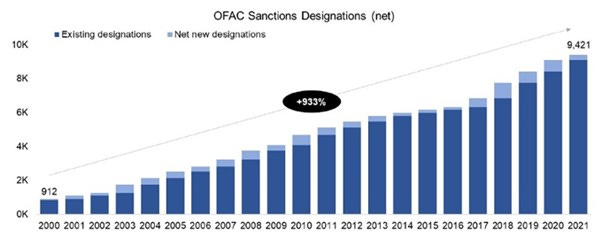One of the first history books ever written was by a lad in Greece called Thucydides. In the book, he gives an account of a war fought way back in 431 BC between two rival city-states in Greece; Athens and Sparta. At the time Sparta was the top-dog in Greece, with plenty of muscle in its army to back it up. On the other side of Greece, Athens began to rise as an alternative power to rival that of Sparta.
As in many American westerns, the classic line “this town ain’t big enough for both of us” was being echoed in the saloons across Greece and sure enough, war eventually broke out between Sparta and Athens. The Athenians had the advantage on the sea through their superior naval capabilities while the Spartans had the advantage on land through their superior fisty-cuffs capabilities. For 30 odd years, the war between the two rumbled on, devastating the local population with no clear victor emerging from the bloodshed.
From a technological standpoint, this war was rather binary. The theatres of war were confined to simply land and sea. The sea operations were kept largely on the surface unless the Greeks were willing to hold their breath. As for the land operations, albeit the Greeks revolutionized this form of warfare, it was confined to being on foot or maybe on a horse if they were lucky.
What eventually decided this war was the entrance of a new player onto the stage.
The Persians, loaded with cash, decided which horse in the race it wanted to back. The Persians opened their wallet and forked out for a massive new fleet of ships for the Spartans. When this was built, the balance of power quickly shifted in favour of the Spartans as they now held the advantage on both land and sea. The Spartans weren’t long wrapping things up, bringing an end to the 30 year war.
Besides from an account of the events of the long war, Thucydides gave his interpretation for why the war happened at all:
“It was the rise of Athens and the fear that this instilled in Sparta that made war inevitable.”
This led political scientist Graham Allison to coin the term “Thucydides’s Trap”, which is the concept of the risk of conflict arising between an established power and a rising power in geopolitics.
This concept is an acute element of human nature and behaviour in all forms of competition; ambition. To threaten for the top spot, and when at the top to be alert to potential threats. This cognitive loop within the human psyche is deeply embedded. From fueling the rivalries that exist in the local u14 hurling county championship in wanting to be the best and stay the best, to fueling the rise and fall of civilizations throughout history, it is a part of what made humans survive and thrive as a species.
Allison went back into the history books and cited 16 instances where a rising force threatened to unseat an established power, where war broke out as a result in 12 of those instances. A hit rate of 75% for conflict.
In the 4 instances where conflict was avoided, it was the use of creative and sometimes miraculous interventions that averted disaster.
A good example of this was in 1494, when Spain and Portugal were gearing up to rip each other apart. They had left the pub, removed their shirts and were circling each other in the street outside with their fists raised and ready for action. Thankfully, along came the big man, the Pope, to stand in between them to calm the tensions between the lads through the signing of Treaty of Tordesillas. Amen to that.
Although I do agree with Allison’s broad concept of Thucydides’s Trap as a constructive means to understanding the dynamics of power in geopolitics, with regards to the US and China, it is exponentially more complicated.
China is the rising power in the modern world. This rise has occurred at a rate that is unheard of in the development of civilisations. In 1978, 90% of its population of 956 million people were living on less than 2 dollars a day. The benchmark income level for extreme poverty. 1978 was also the same year Supermac’s opened their first chipper in Ballinasloe. Supermac’s now has 118 chippers and China has less than 1% in extreme poverty. Both, equally, extraordinary levels of growth.
China’s rapid growth has propelled it into contention with the standing champion powerbase of the world; the US. As the Thucydides’s Trap theory goes, there is a high probability that these two states are on a collision course for conflict.
However, as mentioned above, the scrap between the standing power Sparta and the rising power Athens in 431 BC was confined to two theatres of conflict; land and sea. The rivalry between the US and China has immensely expanded these realms from the modern use of submarines (which go a lot deeper than the average Greek can hold his breath for), to advanced land capabilities such as artillery and tanks (shockingly horses are now largely irrelevant in the modern world, just don’t tell the lads at the Ballinasloe Fair).
Besides from land and sea; airspace, cyberspace and even space-space are now all areas of competition.
Competition in space is one area I will be discussing soon, as its geopolitical significance arguably supersedes everything else!
Recent years have even seen the waging of an additional form of warfare; economic warfare through imposing sanctions upon sanctions. These economics knots have become too easy to implement and are rare to reverse. Other than a significant shift in the global order resulting in a Great Unravelling of these knots, this economic warfare will continue to complicate proceedings towards a happy ending of avoiding Thucydides’s Trap. For reference, the following shows the cumulative number of US imposed sanctions over the last 20 odd years:
The conflict between Sparta and Athens is an exceptional case study identified by Thucydides. What tipped the conflict into conclusion, was one side gaining an advantage on the sea which meant it had complete dominance over all theatres of conflict, even if there were only two.
In the great rivalry between the US and China, there is a lot more to consider. The fierce competition and relentless technological progressions mean the advantages held by one side today is no guarantee it will be held tomorrow. The goalposts are in a constant state of flux.
Thucydides’s Trap says we are heading for conflict, however, to throw a final cat among the pigeons to further complicate matters is the impact 3rd parties can have.
As with Sparta and Athens, the Persians stepping onto the stage changed the game. The influence outside powers can have, especially in the modern hyper-globalised / interconnected economy we live in, cannot be disregarded.
If a conflict between the US and China sparks, it will likely be over Taiwan in the South China Sea. Meaning the US will be scrapping far from home and will have to rely on its friends in the neighbourhood for support; Japan, South Korea and the Philippines.
China, will be relying on its Russian best friend, Putin, to continue supplying its energy needs that fueling a modern-day conflict would demand.
Other players classified as “middle-powers” in geopolitics such as Saudi Arabia and Turkey cannot be overlooked either. Through their supply of energy and weapons respectively, these are two increasingly influential middle-powers that have the ability to tip the scales of any conflict. Expect to see continued mating dances being performed under the guise of trade agreements, weapons sales and technology sharing by the US and China in an attempt to woo each middle-power into their corner.
When you are the top dog, it is human behaviour to allow short-term thinking to take priority as you are constantly worrying about batting off potential threats.
Whereas when you are the underdog, you have the comfort of long-term thinking. This ability to plan your strategic approach is valuable. Careful, long-term planning could not be more relevant in the case of the Chinese. China has a deep culture of thinking in generations as opposed to Westerners who have a habit of thinking in headlines and news cycles.
What can we do to avoid falling into Thucydides’s Trap?
Diplomacy, conversation and understanding are the only ways to avert conflict. Either that, or the Pope would want to start hitting the gym big time. He will have his work cut out for him trying to stand in between the big lads of the US and China when the shirts come off.
Subscribe below, plenty more to come.







